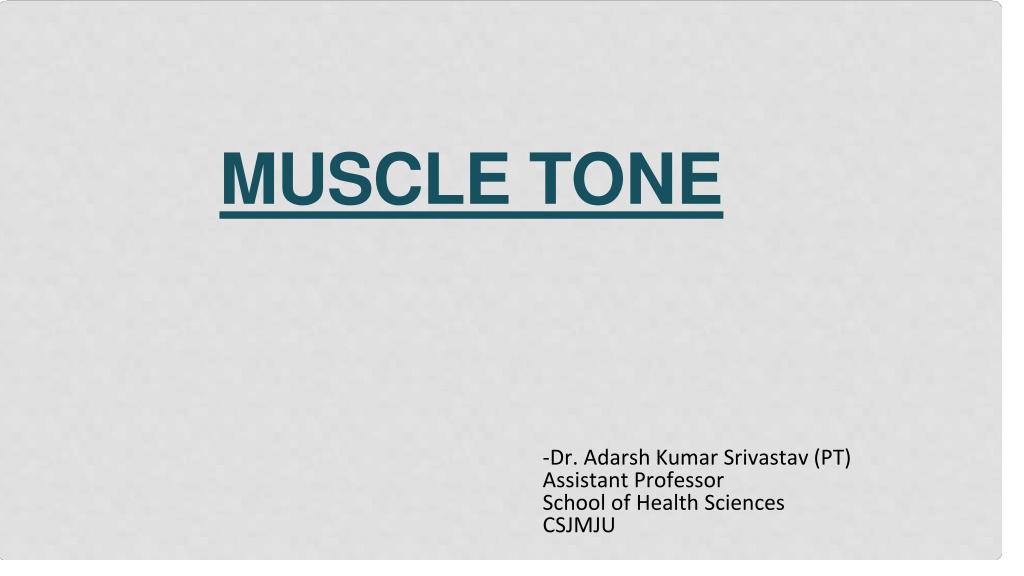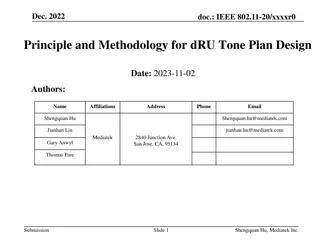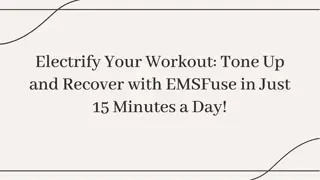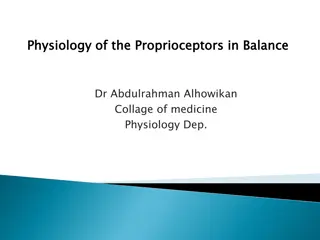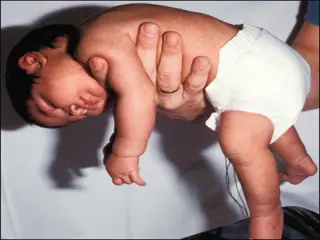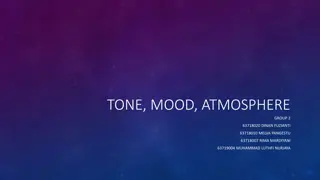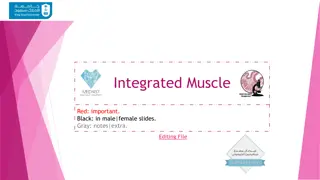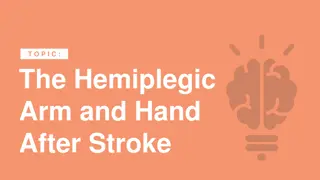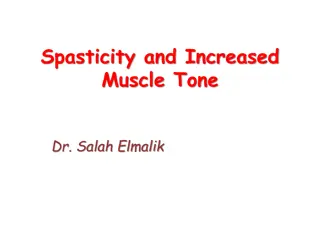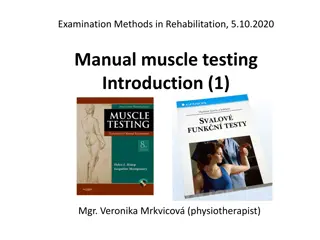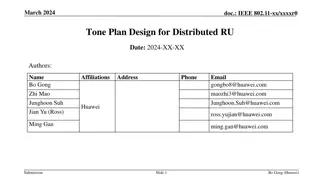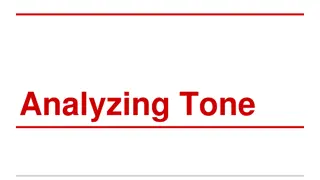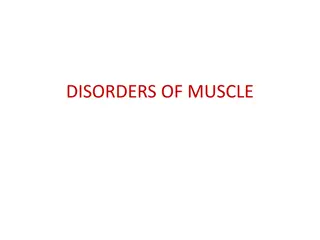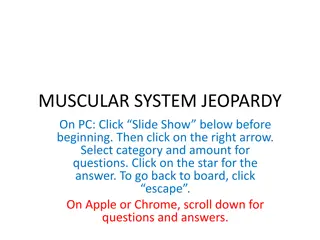MUSCLE TONE
Muscle tone is crucial for maintaining muscle relaxation and function. Abnormalities such as hypotonia, hypertonia, spasticity, rigidity, dystonia, and others can impact movement and overall health. Learn about the causes, symptoms, and implications of these tone abnormalities.
Download Presentation

Please find below an Image/Link to download the presentation.
The content on the website is provided AS IS for your information and personal use only. It may not be sold, licensed, or shared on other websites without obtaining consent from the author.If you encounter any issues during the download, it is possible that the publisher has removed the file from their server.
You are allowed to download the files provided on this website for personal or commercial use, subject to the condition that they are used lawfully. All files are the property of their respective owners.
The content on the website is provided AS IS for your information and personal use only. It may not be sold, licensed, or shared on other websites without obtaining consent from the author.
E N D
Presentation Transcript
MUSCLE TONE -Dr. Adarsh Kumar Srivastav (PT) Assistant Professor School of Health Sciences CSJMJU
INTRODUCTION Definition: Resistance of muscle to passive elongation or stretch when an individual attempts to maintain muscle relaxation. 1. Physical Inertia 2. Intrinsic mechanical elastic stiffness 3. Reflex muscle contraction ( tonic stretch reflex) TONALABNORMALITIES - Hypotonia Hypertonia-Spasticity and Rigidity Dystonia Decerebrate and Decorticate Rigidity Factors
ABNORMAL TONE SPASTICITY Hypertonic motor disorder Velocity dependent Clasp- knife response Chronic spasticity- abnormal posture, deformity, disability Injury to pyramidal tract- UMN lesion Loss of inhibitory control over lower motor neurons Results in disordered spinal segmental reflexes Increased alpha motorneurone excitability
Sign and symptoms- hyperactive stretch reflexes Involuntary flexor and extensor spasms Babinski s sign positive Abnormal plantar reflex Exaggerated deep tendon reflexes Loss of precise autonomic control Clonus- cyclic, spasmodic alteration of muscle contraction relaxation in response to muscle stretch of a spastic muscle. Common in plantar flexors
RIGIDITY Hypertonic state Increased uniform resistance that persists throughout the whole ROM (leadpipe) Cause- lesion of the basal ganglia system ( Parkinson s disease) Stiffness, inflexibility, Significant functional limitation. Due to excessive supraspinal drive (UMN facilitation) Spinal reflex mechanisms are normal. Cogwheel- Hypertonic state with superimposed rachetlike jerkiness, commonly in UE movement e.g Elbow flexion/ extension)
HYPOTONIA Flaccidity-Absent muscular tone Resistance to passive movement is diminished Stretch reflexes are dampened or absent, limbs are floppy Occurs in Lower Motor Neuron Lesion- affection of ant horn cell and peripheral nerves Symptoms- Decreased or absent reflexes, paresis or paralysis, muscle fasciculation and fibrillation, muscle atrophy. Temporary states of flaccidity or hypotonia- Spinal Shock/ cerebral Shock depending upon location of lesion.
DYSTONIA Hyperkinetic movement disorder characterized by disordered tone and involuntary movements involving large portion of the body. Movements are similar to athetoid movements with typical twisting/writhing motions. Dystonic Posturing- sustained abnormal postures due to co-contraction of muscles. Result from a CNS lesion (Basal Ganglia). Focal Dystonia-Affects only one part of the body e.g spasmodic torticollis. Segmental Dystonia- Affects two or more adjacent areas e.g dystonic posturing of arms.
DECEREBRATE RIGIDITY Abnormal Extensor Response - refers to sustained contraction and posturing of the trunk and lower limbs in a position of full extension. Indicative of corticospinal brainstem lesion between superior colliculus and vestibular nucleus. Elbows- extended, Shoulders- adducted, Forearm- pronated, wrist and fingers- flexed, lower limb- stiff extension and plantarflexion.
DECORTICATE RIGIDITY Abnormal Flexor Response -refers to sustained contraction and posturing of upper limbs in flexion and lower limbs in extension. Is indicative of corticospinal tract lesion at the level of diencephalon Elbows, wrist and fingers- flexion, Shoulder- adducted, lower limb- Extension, I.R and plantarflexed.
EXAMINATION OF TONE Consists of Initial Observation of resting posture and palpation Passive motion testing Active motion testing
Tone is variable in nature. Hence depends on following factors Volitional effort and movement Stress and anxiety Position and interaction of tonic reflexes Medications General health Environmental temperature State of CNS arousal and alertness Urinary bladder status Fever and infection Metabolic and or electrolyte imbalance
Initial Observation and palpation Abnormal posturing of limbs or body. With spasticity- fixed posturing in synergy pattern Flaccidity limbs appear floppy and lifeless With palpation gives more information about resting state of a muscle Consistency , firmness and tergor should be examined Hypertonic muscle feels taut and harder Hypotonic muscle feels soft and flabby
TYPICAL PATTERNS OF SPASTICITY IN UMN LESION Upper limb Scapula Shoulder Actions Retraction, Downward rotation Adduction , internal rotation , depression Flexion Pronation Muscles affected Rhomboids Pectoralis major, LD, Teres major, Subscapularis Biceps, Brachialis, Brachioradialis Pronator teres, Pronator Quadratus, Flexor Carpi radialis FDP, FDS, Add Pollicis Brevis, FPB Elbow Forearm Wrist Hand Flexion adduction Finger flexion, clenched fist thumb. Adducted in palm
TYPICAL PATTERNS OF SPASTICITY IN UMN LESION Lower limb Pelvis Hip Action Retraction Adduction , Internal rotation, extension Extension PF, Inversion, Toes claw, Toes curl Muscles affected Quadratus lumborum Add Longus/brevis, Add Magnus Knee Foot and ankle Quadriceps Gastroc soleus , Tibialis Posterior , Long toe flexors Rotators , internal /external obliques Trunk Lateral flexion, rotation
Passive motion testing : Responsivness of muscle to stretch Patient is instructed to relax , maintain firm and constant manual contact Normal tone- limb moves easily and therapist is able to alter direction and speed without feeling abnormal resistance. Hypertonic muscle- stiff feeling, resistant to movement, Hypotonic mucscle- heavy feeling and unresponsive Increasing the speed of movement increases the resistance in case of hypertonic muscle. Clonus- maintained quick stretch stimulus Begin tone assessment with normal side Comparison between upper and lower limbs and also between right and left side.
GRADING OF TONE 0-4+ scale 0- No Response (flaccidity) 1+ Decreased response (hypotonia) 2+ normal response 3+ Exaggerated response (Mild to moderate hypertonia) 4+ sustained response (Severe hypertonia)
MODIFIED ASHWORTH SCALE In case of Spasticity Subjective , 5 point ordinal scale, 0 No increase in muscle toone 1 Slight increase in muscle tone , manifested by catch and release or by minimal resistance at the end of the ROM when the affected part is moved inn flexion or extension 1+ Slight increase in muscle tone , menifested by catch , followed by minimum resistance throughout the remainder (less than half) of the ROM 2 more marked increase in muscle tone through most of the ROM , but altered part is easily moved 3 Considerable increase in muscle tone, passive movement difficult 4 Affected part rigid in flexion and extension
Pendulum test with the patient seated in high sitting , patient s knee is extended fully and allowed to drop ANormal and hypotonic limb swings freely for several oscillations Hypertonic Limb- resistant to the swinging motion and quickly return to initial starting dependent position Amyotonometer handheld computerised electronic device Quantitative measurements of force and displacement of muscle tissue
SUMMARY Introduction Abnormal Tone- Spasticity Rigidity Hypotonia Dystonia Decerebrate Rigidity Decorticate Rigidity Examination of tone ModifiedAshworth Scale
REFERENCE Physical Rehabilitation by Susan B O Sullivan 5thEdition
